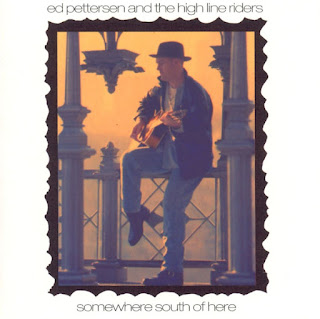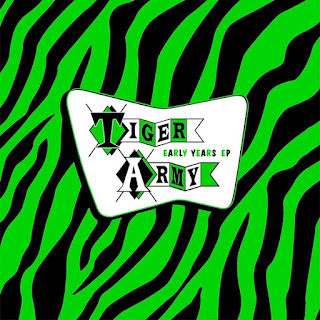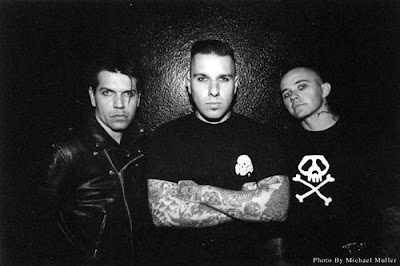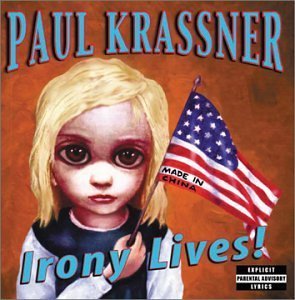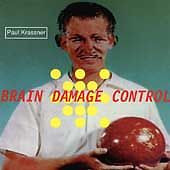.jpg)
|
|
Talking Heads 1980 |
As Noel Murray wrote for The A.V. Club webzine, “though hardly uniform in style, there were commonalities between the college-rock acts. Not really punk, hard rock, or art rock, most of these groups played conventionally hooky songs, heavy on jangle and twang, with lyrics steeped in poetic Americana.” In the wake of America’s overall indifference to the bloato-hype of “new wave” and the sort of neutered, safe-as-milk punk rock then being shilled by the major label machine, Murray insightfully states that “the edgier and artier acts found a home on college radio, where screaming noise, retro country, avant-garde electronics, and power pop could coexist, linked by cheap-sounding singles recorded by local bands, often peopled by college-radio DJs and record-store clerks.”
College rock was a genre-that-wasn’t-a-genre unique to the ‘80s, later to be subsumed into the alternative rock tsunami of the 1990s, which itself was heavily influenced by many of the bands included on this list. College radio went further underground in the ‘90s as many onetime college rock stalwarts found unexpected (and often unwelcome) mainstream success. College radio itself barely exists today as many universities have divested themselves of their broadcast licenses for much-desired cold cash. Once upon a time, however, the “left of the dial” provided adventuresome listeners a respite from the anodyne hard rock pushed by homogenized, consultant-driven commercial FM radio playlists.
To follow is the Reverend’s “Top 10” list of college rock artists that helped blaze a trail during the uncertain ‘80s, my favorites among the many records I heard spun by DJs on Vanderbilt’s WRVU-FM in Nashville over the years. Your list may differ from mine, and you’re welcome to hype your personal faves in the comments section.
10. They Might Be Giants
The “Two Johns” – John Flansburgh and
John Linnell – were the unlikeliest of ‘80s-era rock heroes. They weren’t
black-clad, axe-toting, semi-Goth fops moping around and moaning about how bad
their lives were, nor were they tech-obsessed keyboard warriors with wobbly
stacks of synthesizers, moaning about how bad their lives were. They Might Be
Giants was a jaunty acoustic duo with absurdist, often surreal songs which
displayed the John’s quirky sense of humor and playful, imaginative lyrics.
Signed to the regional independent Bar/None Records label, their
critically-acclaimed 1986 self-titled debut album became a mainstay of college
radio with tracks like “Don’t Let’s Start,” “Put Your Hand Inside the Puppet
Head,” and “(She Was A) Hotel Detective” becoming staples of FM alt-rock
airplay.
The Giants’ 1988 follow-up album, Lincoln, was
even more successful, fueled by the infectious single “Ana Ng,” which brought
them to the attention of Elektra Records. Called up to the major leagues, the
Johns were forced to recruit a full band to tour with, but they recorded their
third LP and 1990 label debut, Flood, largely by themselves with a slew
of guest musicians. Provided a fair amount of creative freedom,
Flood eventually achieved Platinum™ sales status on the back of melodic
earworms like “Birdhouse In Your Soul” and “Istanbul (Not Constantinople).”
The band rode out the ‘90s with a string of moderately-successful major label
efforts, eventually branching into movies and TV, and even kid’s music, and
the Two Johns are still banging away at it today, proof that a band can retain
both its innocence and its integrity. Recommended Album:
They Might Be Giants
They Might Be Giants photo courtesy Elektra Records
9. XTC
College rock wasn’t notably biased in favor of American
artists who, it could be argued, experienced greater corporate marginalization
in the ‘80s. Anglophiles made up a large segment of college radio listeners
and import LPs from the U.K. and elsewhere were easy to get in larger cities
(especially those with universities). As such, artists like the Smiths,
Depeche Mode, Robyn Hitchcock, and the Cure found loyal audiences on the left
of the dial. XTC is a perfect example of a British band whose stateside
following was 90% built by college radio (MTV later adding the other 10%).
Formed in 1972 in Swindon, England and fronted by singer/guitarist Andy
Partridge and singer/bassist Colin Moulding with keyboardist Barry Andrews and
drummer Terry Chambers, the band’s unique blending of New York Dolls-inspired
punk, jagged guitar rock, and skewed Britpop had “cult rockers” written all
over it. XTC transcended punk and new wave with the eccentric musings of
White Music, their 1978 Virgin Records debut album.
British
record buyers nevertheless pushed the album into the U.K. Top 40, and it was
quickly followed up later that year by Go 2, which rose even higher to
#21 on the charts. Andrews left afterwards, replaced by a second guitarist in
Dave Gregory. The band found a creative balance between eccentricity and
accessibility with 1979’s Drums and Wires, scoring a Top 20 hit single
in “Making Plans For Nigel.” The album was also XTC’s first to inch onto the
U.S. charts, albeit at #174, but with the new decade came Black Sea,
which became the band’s highest-charting U.S. release. Released in 1982 and
quickly finding a home on college radio stateside,
English Settlement is arguably XTC’s masterpiece, singles like “Senses
Working Overtime” and “Ball and Chain” threatening to take the band
mainstream. Subsequent albums like 1983’s Mummer and 1986’s
Skylarking earned diminishing returns for the band, but 1989’s
psych-pop oriented Oranges & Lemons brought XTC a renewed
reputation with the hit single “Mayor of Simpleton.” By 1992, the members of
XTC had gone their separate ways, but despite the band’s relative obscurity in
America, they were major influences on ‘90s-era bands like Jellyfish and
Apples In Stereo. Recommended Album:
English Settlement
XTC 1978, photo by Jean-Luc Ourlin, courtesy Wikipedia Commons
8. Love and Rockets
Formed in 1985 from the ashes of Goth-rock
pioneers Bauhaus by that band’s Daniel Ash (vocals, guitar), David J (bass,
vocals), and Kevin Haskins (drums, synthesizers), Love and Rockets pursued
less morose music with a guitar-driven pop/rock sound that quickly resulted in
a cult of fans stateside and in their British homeland. Signed to the Beggar’s
Banquet label (which had previously released three Bauhaus LPs), the band
introduced themselves with a psych-drenched take on the Motown classic “Ball
of Confusion,” a non-album single which didn’t sell particularly well but
found a welcome home on college radio in the U.S. Their 1985 debut album,
Seventh Dream of Teenage Heaven, faltered commercially, but the
following year’s Express album yielded well-received singles with
“Kundalini Express,” “All In My Mind,” and “Yin and Yang (The Flowerpot
Man).”
Although 1988’s Earth, Sun, Moon represented a step
forward creatively, it performed weakly commercially save for the minor
college radio hit “No New Tale To Tell.” The band’s self-titled 1989 album
evinced a bolder AOR sound that resulted in a Top 10 U.S. hit with “So Alive,”
which pushed the album to Gold™ sales status. After a lengthy hiatus that saw
the band members pursue individual solo projects, Love and Rockets returned
with 1994’s Hot Trip To Heaven, a severe departure from their previous
sound that incorporated electronic and ambient sounds with psychedelic
elements which fell on deaf ears among their longtime fans. Dumped by Beggar’s
Banquet, the band recorded a 1996 album for Rick Rubin’s American Recordings
label, Sweet F.A. returning to a harder-rocking sound a day late and a
dollar short. A final album for the ill-fated Red Ant Records – 1998’s
Lift – returned the band to an electronica sound that resonated with
absolutely nobody. Red Ant’s subsequent bankruptcy, along with a
long-anticipated Bauhaus reunion tour, stamped ‘paid’ to Love and Rockets, but
at least the band delivered three enduring albums during the college rock era.
Recommended Album:
Love and Rockets
Love and Rockets photo by Mitch Jenkins, courtesy Beggar’s Banquet
Records
7. The Pixies
Suffice it to say that, with the 1988 release of
their debut album Surfer Rosa by the U.K. 4AD Records label, rock fans
had never heard anything like the Pixies. Formed a couple of years earlier in
Boston by singer/guitarist Black Francis (a/k/a ‘Frank Black’), guitarist Joey
Santiago, bassist Kim Deal, and drummer David Lovering, the Pixies were almost
too late for the college radio party, their brief (1988-91) four album heyday
straddling the college rock ‘80s and the alternative ‘90s and having an
immense influence on bands like Nirvana and Smashing Pumpkins. Produced by
underground wunderkind Steve Albini (R.I.P.), Surfer Rosa was
groundbreaking in its use of a “loud/quiet/loud” musical dynamic (later
utilized with some success by Nirvana), coupled with the band’s chaotic,
cacophonic punk-influenced sound, and Black’s eerie, odd, and often surreal
lyrics. Due to scattered distribution, Surfer Rosa was little heard in
the U.S. save for on college radio.
Doolittle, the Pixies’
sophomore album, offered more of the same, only with a bigger recording
budget, and the extra noise the additional cash could buy. Songs like
“Debaser,” “Here Comes Your Man,” and “Monkey Gone To Heaven” received heavy
college radio airplay, while a new distribution deal with Elektra Records put
the record in stores across the U.S. which, combined with constant touring by
the band, launched Doolittle to Platinum™ sales status. Not wanting to
mess with a good thing, the band recorded 1990’s Bossa Nova with
producer Gil Norton (who helmed Doolittle), but their sound was showing
signs of being watered-down for popular consumption. The Pixies’ swansong,
1991’s Trompe le Monde, displayed further creative exhaustion, and that
would be it for the band until their first reunion in 2004. Elektra reissued
Surfer Rosa in 1992, after the band was essentially kaput, extending
the Pixies’ notoriety well into the alt-rock era. Frank Black subsequently
pursued a solo career that is still thriving to this day alongside various
Pixies reunion tours, while Kim Deal made a name for herself in the ‘90s as
the creative force behind the Breeders. Recommended Album:
Doolittle
The Pixies photo courtesy 4AD Records
6. Camper Van Beethoven
Formed in 1983 in Southern California, the
eccentric and visionary Camper Van Beethoven pursued a unique hybrid musical
that blended the sounds of punk, pop, folk, country, and folk music into a
heady sonic stew that often left their hardcore punk audiences gasping in
confused fury. Students at the University of California, Santa Cruz, the
line-up of singer/guitarist David Lowery, guitarist Chris Molla, bassist
Victor Krummenacher, multi-instrumentalist Jonathan Segel, and drummer Anthony
Guess recorded 1985’s odd yet entertaining
Telephone Free Landslide Victory. The album quickly earned the band
much coveted college radio airplay with “Take the Skinheads Bowling” and a
countrified cover of Black Flag’s “Wasted.” Camper Van Beethoven tread water
with their 1986 sophomore effort II & III, with Guess dropping out
and guitarist Greg Lisher coming on board. Guess was replaced by Chris
Pederson on drums.
With their best-known line-up in place, the band
broke through with its tongue-in-cheek self-titled 1986 album, which threw
caution to the wind with an inspired mash-up of punk rock, psychedelia,
Zep-styled bombast, and satirical lyrics on songs like “Joe Stalin’s Cadillac”
and a raucous cover of Pink Floyd’s “Interstellar Overdrive.” The album also
saw the beginning of the band’s association with avant-garde D.I.Y. guitarist
Eugene Chadbourne, which would result in two impressive collaboration LPs.
Camper Van Beethoven made the jump to Virgin Records for
Our Revolutionary Sweetheart (1987) and Key Lime Pie (1989),
both of which featured a more mainstream rock style. The band subsequently
broke up, with Lowery forming the modestly-successful ‘90s band Cracker and
the rest of the guys pursuing their musical side project, Monks of Doom.
Camper Van Beethoven reunited in 1999 and released several albums through
2014, but the college rock era was long over and only hardcore fans noticed.
Recommended Album:
Camper Van Beethoven
Camper Van Beethoven photo courtesy Virgin Records
5. Talking Heads
Forming in 1975 in New York City and mainstays of
the decade’s CBGB scene, Talking Heads were never really a punk band, although
their unique sound and uncompromising attitude certainly appealed to the more
free-thinking punk-rock fanatic. The same aspects of the band that made them
outliers on a CBGB stage that included such diverse artists as Blondie, The
Ramones, Television, and Patti Smith also positioned them for college rock
stardom in spite of their success as a Top 30 charting band with albums like
More Songs About Buildings and Food and Fear of Music.
Singer/guitarist/keyboardist David Byrne, guitarist Jerry Harrison, bassist
Tina Weymouth, and drummer Chris Frantz were musically adventuresome, the
band’s wandering muse leading them down some seldom-travelled creative
pathways that paid off in cold, hard cash. Talking Heads burst out of the CBGB
ghetto and arrived to the 1980s, bag of tricks in hand, ready and willing to
infect college radio with their peculiar vision and talented musicianship.
They became darlings of the fledgling MTV network, mostly due to
imaginative music videos and Byrne’s exaggerated on-screen personality, but it
was their Brian Eno-produced 1980 album Remain In Light, which
incorporated Afrobeat rhythms inspired by Nigerian musical legend Fela Kuti
into a sonic experiment with funky grooves and an alt-rock soundtrack, that
earned the band their first Gold™ Record on the back of the classic single
“Once In A Lifetime.” Their 1983 album Speaking In Tongues transcended
the band’s long-standing college rock popularity to cement their mainstream
rock status with the Top 10 hit single “Burning Down the House,” which drove
the album to Platinum™ sales status. Their college rock popularity suffered
little from hit albums like 1985’s Little Creatures or 1986’s
True Stories, both of which featured a poppier “new wave” sound but,
after better than a decade in the trenches, 1988’s back-to-Afrobeat collection
Naked sounded weak by comparison to their earlier works and the band
went on a hiatus that continues, more or less, to this day.
Recommended Album:
Fear of Music
Talking Heads 1980, photo uncredited, courtesy Sire Records
4. Hüsker Dü
Originally formed in St. Paul, Minnesota in 1979 as
‘Buddy and the Returnables’ and featuring singer/guitarist Bob Mould, bassist
Greg Norton, keyboardist Charlie Pine, and drummer Grant Hart, the core trio
soon dropped Pine, took on a new name, and plowed ahead with a fast ‘n’ loud
guitar-rock sound that often teetered on the shiny, sharp edge of heavy metal.
Although Hüsker Dü’s initial guise was that of a hardcore punk band, the guys
left themselves a lot of creative space to grow into, and I’ve always
considered them the first true ‘post-punk’ band of note. After regional
tastemakers Twin/Tone Records rejected the band, they began releasing singles
on their own Reflex Records label, which led to the release of the live
Land Speed Record in 1982 and their 1983 studio debut,
Everything Falls Apart. Steady touring by the band made fans out of
scene heavies like Jello Biafra of the Dead Kennedys, D. Boon of the
Minutemen, and Black Flag’s Greg Ginn, who signed them to his SST Records
label.
Hüsker Dü’s tenure with SST was astonishingly brief (a
couple of years, really…) but fruitful, resulting in three bona fide classics
of punk/post-punk Sturm und Drang with the 1984 double-album
Zen Arcade and the following year’s New Day Rising and
Flip Your Wig. The band benefitted by having two accomplished singers
and songwriters in Mould and Hart, and they successfully kept their unique
musical formula intact after signing with Warner Bros. I defy any critic to
argue that the band’s major label output (1986’s Candy Apple Grey and
1987’s Warehouse: Songs and Stories) isn’t as fresh and exhilarating as
their SST albums. As music historian Michael Azerrad stated in his 2001 book
Our Band Could Be Your Life, Hüsker Dü provided a bridge between punk
1980s-era college rock, writing that the band “played a huge role in
convincing the underground that melody and punk rock weren’t antithetical.”
After the band had run its course, Mould went on to an acclaimed solo career
that included the alt-rock band Sugar while Hart released two albums with his
band Nova Mob as well as a number of solo records. Hüsker Dü was immensely
influential, with everybody from Nirvana, the Pixies, Green Day, and
Superchunk singing their praises. Recommended Album:
New Day Rising
Hüsker Dü 1986, photograph by Daniel Corrigan, courtesy Warner Bros.
3. The Replacements
Much like their crosstown contemporaries (and
sometimes rivals) Hüsker Dü, the Replacements started out as a punk rock
outfit and quickly veered towards an influential alt-rock sound that was as
equally influenced by bands like Big Star, the Rolling Stones, and the Beatles
as it was by the Ramones and Sex Pistols. Formed in Minneapolis, Minnesota in
1979, the early line-up of the Replacements featured singer/guitarist Paul
Westerberg, guitarist Bob Stinson, his brother Tommy Stinson on bass, and
drummer Chris Mars. They came to an agreement with the local indie Twin/Tone
Records to release their 1981 debut,
Sorry Ma, Forgot To Take Out the Trash, which received overwhelmingly
positive fanzine reviews. The eight-song Stink EP followed in 1982 but,
with Westerberg emerging as the band’s primary songwriter, 1983’s
Hootenanny album saw the band shrugging off the punk rock albatross and
incorporating elements of blues, country, and rockabilly into their ramshackle
sound. With their third album, Let It Be, the Replacements found its
voice as a band, Westerberg’s ‘coming-of-age’ lyrics evincing a humorous,
rather than dour vision of the transition into adulthood. Songs like “I Will
Dare,” “Unsatisfied,” “Androgynous,” and a cover of Kiss’s “Black Diamond”
became college radio staples.
The major labels soon came calling
and the Replacements signed with Sire Records. Former Ramones drummer Tommy
Erdelyi produced the classic 1985 album Tim, which yielded several
timeless tracks like “Kiss Me On the Bus,” “Bastards of Young,” and the band’s
ode to college radio, “Left of the Dial.” Three more major label releases
cemented the band’s status as college rock trailblazers:
Pleased To Meet Me (1987) was recorded at Ardent Studios in Memphis
with producer Jim Dickinson, and includes the band’s tribute song “Alex
Chilton” while 1989’s Don’t Tell A Soul was the first to feature
guitarist Slim Dunlap, who had replaced Bob Stinson.
All Shook Down (1990) was the band’s swansong, essentially a Westerberg
solo album, and afterwards the band went its separate ways. The Replacements
could have been bigger, commercially, save for their unpredictable live shows
– some nights they were the best rock ‘n’ roll outfit anywhere while other
nights they were falling down drunk and barely able to play. Ticket-buying
fans never knew which version of the Replacements that they’d get, but the
band was still highly influential, with disciples like the Goo Goo Dolls,
Beach Slang, and the Gaslight Anthem following in their wake.
Recommended Album:
Let It Be
The Replacements 1984, photo by Laura Levine, courtesy of Twin/Tone
Records
2. The Smiths
Along with RE.M. the Smiths were probably the most
influential of the college rock bands of the ‘80s, directly inspiring the
following decade’s “Britpop” movement and bands like Blur, Suede, Oasis, and
the Manic Street Preachers; alt-rockers like Belly and Throwing Muses; and
contemporary millennial bands like the Magnetic Fields, Arcade Fire, and the
Decemberists. Formed in 1982 in Manchester, England by vocalist Steven
Morrissey (i.e. ‘Morrissey’) and guitarist Johnny Marr, who shared a love of
the New York Dolls and Patti Smith, the band eventually evolved to its
best-known line-up with bassist Andy Rourke, and drummer Mike Joyce.
Signed to Rough Trade Records, the Smiths released their
self-titled debut album in 1984, hitting #2 on the U.K. albums charts and
hanging around for a grand 33 weeks. Sire Records picked up the band’s albums
for stateside distribution, which proved to be the Smiths’ entry to college
radio. Meat Is Murder, the band’s classic 1985 album, hit #1 on the
British chart and they added keyboards to their sound for 1986’s
The Queen Is Dead would rise to #2 in the U.K. on the strength of a
pair of Top 30 charting hit singles, “The Boy With the Thorn In His Side” and
“Bigmouth Strikes Again.” Internal band tensions would break-up the Smiths
after the release of 1987’s Strangeways, Here We Come, another #2 U.K.
hit and the band’s highest-charting U.S. release. Morrisey would go on to a
successful solo career that has resulted in better than a dozen albums through
2020. Recommended Album:
Meat Is Murder
The Smiths 1984, photo by Paul Cox, courtesy Sire Records
1. R.E.M.
Although they would become major label chartbusters,
R.E.M. began as a humble band of jangle-rock enthusiasts in the sleepy college
town of Athens, Georgia. Fittingly, for the undeniable granddaddies of
“college rock,” the four members of R.E.M. – singer Michael Stipe, guitarist
Peter Buck, bassist Mike Mills, and drummer Bill Berry – came together while
students at the University of Georgia in Athens. Buck and Stipe met at Wuxtry
Records where Buck worked between classes, quickly bonding over a shared love
of artists like the Velvet Underground and Patti Smith. A mutual friend
introduced them to Mills and Berry, who had been playing together since high
school and, after jamming for a short while, a magical musical chemistry
emerged, with each band member contributing something special to the cauldron.
R.E.M. released its first single, the enigmatic and awe-inspiring “Radio Free
Europe,” in 1981 on the Atlanta-based independent Hib-Tone Records label.
Signing with the major/minor I.R.S. Records imprint, they released
their landmark Chronic Town EP in 1982, following it up with the
critically-acclaimed 1983 album Murmur. With subsequent albums like
1984’s Reckoning, 1985’s Fables of the Reconstruction, and
1986’s Life’s Rich Pageant, R.E.M. dominated the college rock
landscape, quickly outgrowing both the medium and a crowded Athens rock scene
(which also included The B-52’s, Love Tractor, Pylon, and Dreams So Real,
among others). Signing with Warner Bros, R.E.M. easily made the transition to
become a mainstream rock band, releasing five subsequent multi-Platinum™
selling albums that would make them one of the most successful bands of the
‘90s. R.E.M. influenced a generation of artists like Nirvana, Pavement, Pearl
Jam, and Dream Syndicate and can arguably be held responsible for the alt-rock
explosion of the 1990s. Not bad, eh? Recommended Album:
Reckoning
R.E.M. 1992, photo by Anton Corbijn, courtesy Warner Bros.
Honorable Mention: Depeche Mode, The dB’s, The Feelies, Game Theory,
Let’s Active, New Order, The Pogues, Sonic Youth, Violent Femmes, Wall of
Voodoo...
Recommended Album links are for Amazon and we get a cut of your
purchase!
Credit where credit is due…quoted above, my colleague Noel Murray
wrote a great piece on college rock titled “1992: The Year College Rock Died.”
If you’re interested in the subject at all, you should give it a read:
https://www.avclub.com/1992-the-year-college-rock-died-1798233377







.jpg)
.jpg)


